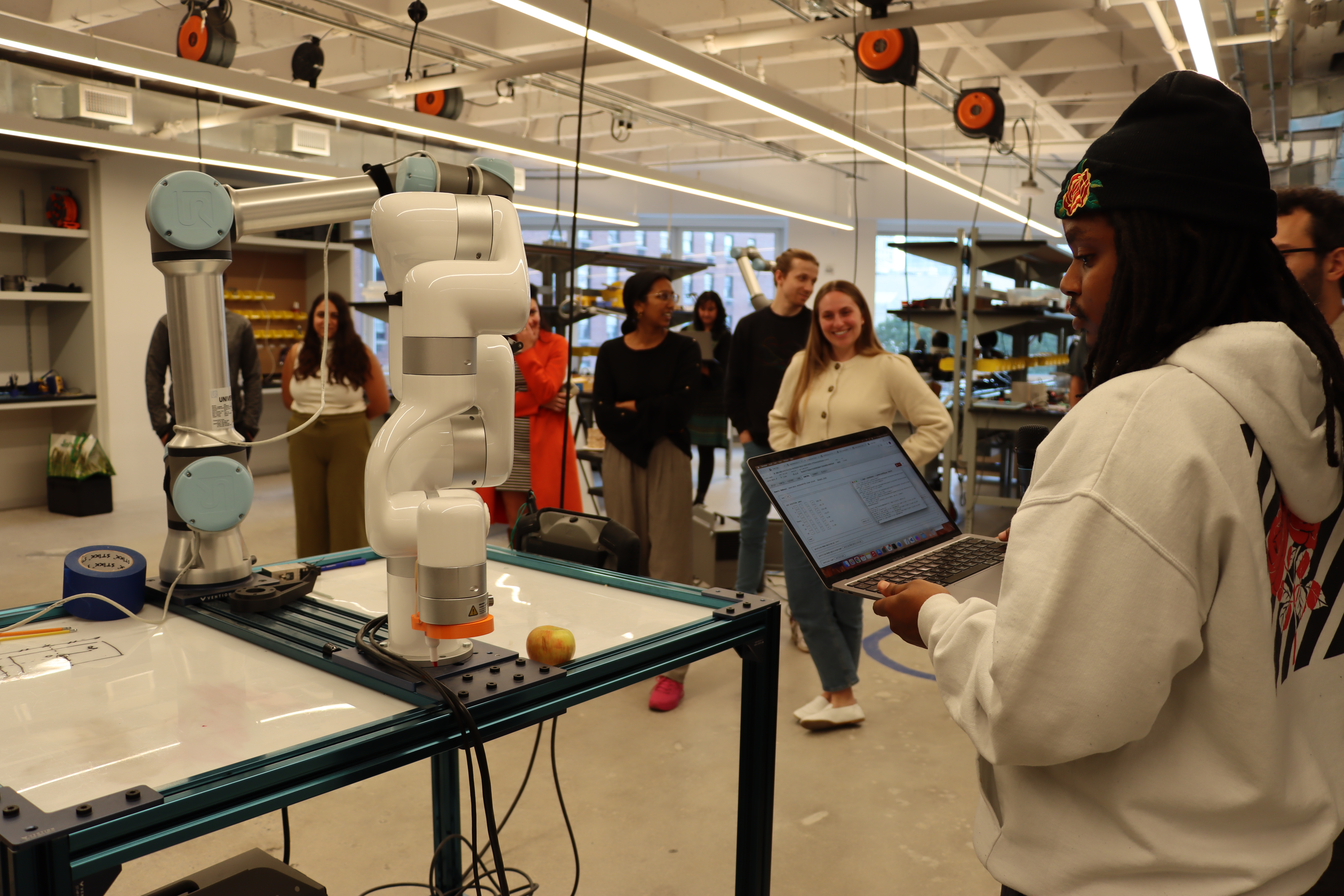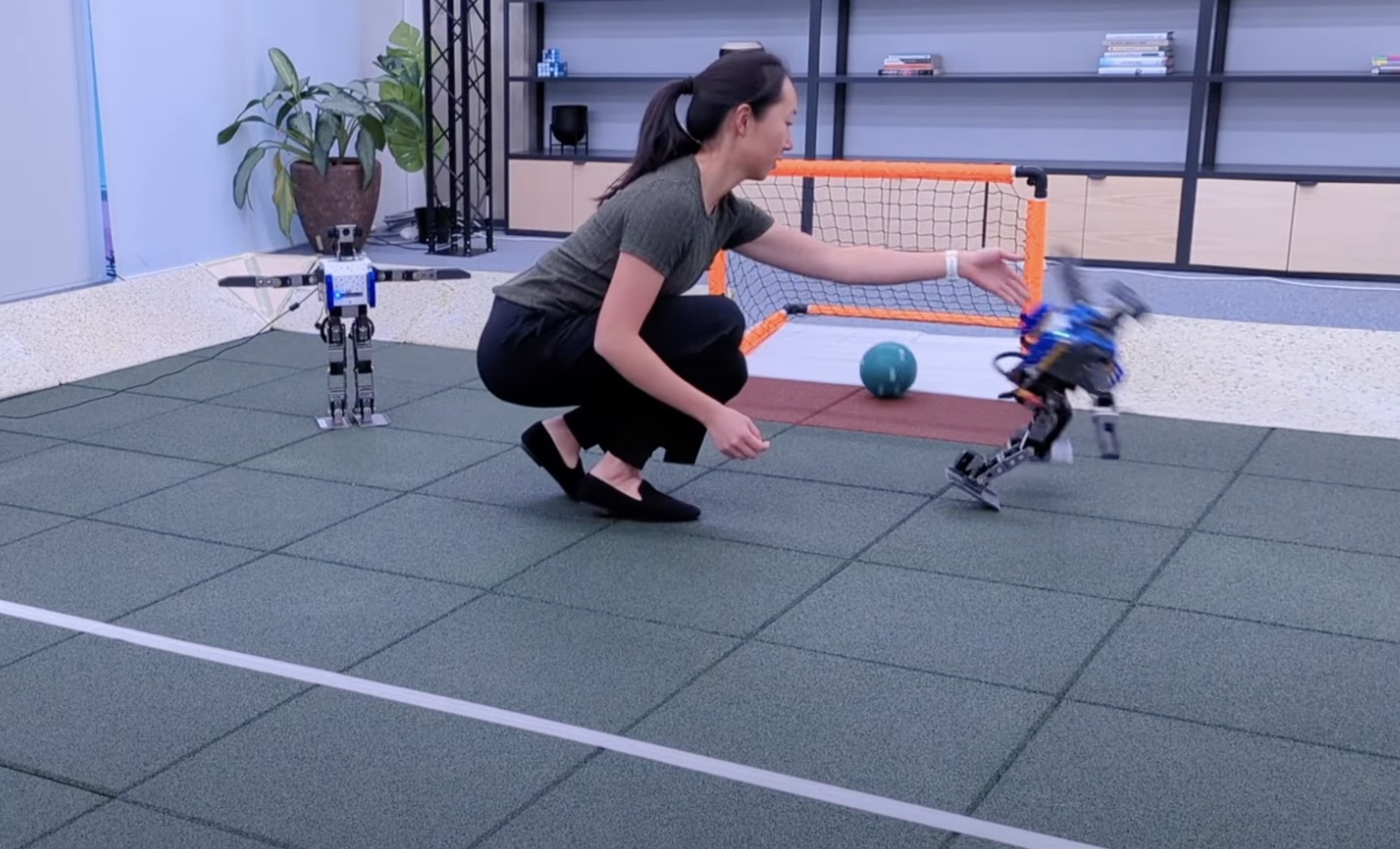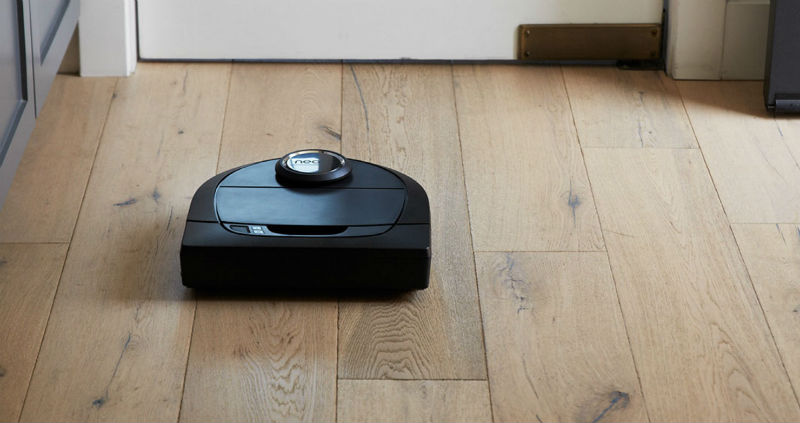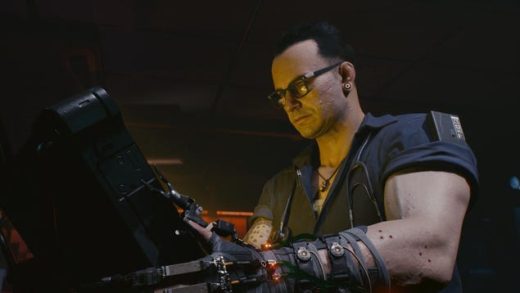I’m heading back to the South Bay next week, thanks to Google I/O, which is coming back to the Shoreline Amphitheater. I honestly don’t expect much of anything related to this beat, though AI is going to be all over that thing. That’s hardly a new phenomenon, of course — previous developer conferences have showcased how in-house developments have made their way into real-world applications like screening phone calls and making dinner reservations.
With hype around generative AI at an all-time high, the onus is on CEO Sundar Pichai to convince the world that Google hasn’t missed a step. The company’s showing thus far with things like Bard has been a bit of a disappointment — enough to actually make Bing relevant for a minute. Brave new world, indeed.
Google’s work in robotics has thus far been spotty. Everyday Robots was notably gutted by this year’s round of corporate layoffs. Thing is, when it’s time to bring the McKinseys of the world in to take a look at the books, fingers invariably point toward the moonshots. High risks, potentially high rewards and extremely long runways. These are precisely the kinds of projects a company invests in during boom times. They’re a good way to keep you a step ahead of the competition or, at the very least, an indication to shareholders and consumers that you’re focused on the future.
A decade ago this year, Google went on a shopping spree. Amazon had made its first big step into the broader world of robots a year prior with its acquisition of Kiva. Not to be outdone, Alphabet would go on to acquire Boston Dynamics, Schaft, Industrial Perception, Meka, Redwood Robotics, Bot & Dolly, Autofuss and Holomni. It was a wild moment for robotics and the tech industry at large, and iRobot’s stock shot up as a result.
Reports at the time revolved around the company’s entry into the manufacturing space — that certainly makes sense when you look at the kinds of startups the company was supermarket sweeping up.
Andy Rubin, the Android co-founder who spearheaded the projects, told The New York Times, “I have a history of making my hobbies into a career. This is the world’s greatest job. Being an engineer and a tinkerer, you start thinking about what you would want to build for yourself.”
More to the point, he added, “Like any moonshot, you have to think of time as a factor. We need enough runway and a 10-year vision.” As someone who was covering the industry a bit at the time, I can tell you that “10 years” was a common refrain. And guess what? This year is 10 years. Some predictions, like autonomous cars, have yet to pan out in a meaningful way. Last-minute robot delivery exists in limited quantities but is still regarded as a novelty.
More broadly, however, robots are here right now. They’re mostly behind the scenes, but they’re doing a lot of work. Boston Dynamics has become one of the most visible with its Spot robot. Following New York City’s announcement that they would be deploying the dog (along with a Knightscope system), footage emerged of the FDNY’s Spot looking for people in the wreckage of a collapsed parking garage — exactly the sort of PR one hopes for as police use of robots continues to raise eyebrows.
Image Credits: TikTok
So, too, does footage of an Atlas clone doing backflips and martial arts moves over on TikTok (currently at 4 million views, from an extremely official account called “Botsom_Dynamics.” I miss Botsom and its delicious Manuel Saddams beer. I honestly didn’t expect to be writing up a Snopes story when I woke up this morning, but here we are.
Boston Dynamics’ systems are forever going to be a prime target for these sorts of fakes. My Twitter replies are full of hack Terminator and Black Mirror jokes any time I write about the company. Sorry to be this guy for a minute, but there are way more effective and cost-efficient ways to hurt people with machines than teaching a 200-pound humanoid robot hand-to-hand combat.
BD is, of course, one of the companies that came through the other side of the Google acquisition largely unscathed. Not everyone was so lucky. Rubin famously left the company amid some extremely gross allegations, and the dream of a unified Google robotics front effectively dissolved not long after.
I was reminded of all of this recently while writing about Robust.AI, as the company’s co-founder and CEO Anthony Jules was also a co-founder and CEO of Redwood Robotics. Following the acquisition, he would go on to become the head of Product for the project that ultimately turned into Everyday Robots. That company was very clearly a product of Google attempting so salvage all of that spending, and at the end of 2019, it detailed some extremely interesting work around the links between AI and robotic learning.
Interesting timing on this newsletter, as just yesterday, Everyday Robots’ head of Software and AI, Max Braun, announced that he had officially moved over to the much safer world of Google AI, becoming its senior director of Engineering. It’s good to see some folks’ talents being employed elsewhere within the org.
I recognize I’ve spent roughly 800 words writing about far more downs than ups. There have been, if not outright successes, then at the very least continued compelling projects born out of X. Wing remains a going concern, with drone delivery pilots happening in a number of areas with a number of different pilots. Waymo’s kicking as well, though it was also impacted by the recent round of layoffs and killed its trucking program. Nuro was born out of Waymo, but founded outside of Google. This January, agtech firm Mineral officially graduated from the Alphabet X program.

Image Credits: Intrinsic
Intrinsic, which was officially announced back in July, remains an interesting question mark. The company was hit hard by the recent Google layoffs, to the tune of 40 people. But it also acquired a pair of startups last year: Vicarious (which appears to have been something more like an acquihire) and Open Robotics, best known as the steward of ROS (though that part of the business is remaining independent). The week after I/O, Intrinsic is hosting its “first product keynote,” which will also feature its “first strategic partner.” In these sorts of instances “strategic partner” often refers to early customers helping to pilot the system.
Here’s what CEO Wendy Tan-White said during the initial announcement:
Over the last few years, our team has been exploring how to give industrial robots the ability to sense, learn, and automatically make adjustments as they’re completing tasks, so they work in a wider range of settings and applications. Working in collaboration with teams across Alphabet, and with our partners in real-world manufacturing settings, we’ve been testing software that uses techniques like automated perception, deep learning, reinforcement learning, motion planning, simulation, and force control.
It’s nice to see growing excitement on the software side of things. I recently wrote about interoperability, which will continue to be huge, so long as warehouses are deploying multiple systems from multiple companies. Ditto for fleet management — there’s a good deal of first party stuff available from manufacturers, but hardware-agnostic software solutions are where it’s at for me.

Image Credits: Viam Robotics
Big news on that front from Viam Robotics. “What a lot of people tell me is ‘hardware is hard,’” founder and CEO Eliot Horowitz told me when I visited their offices in October. “I have a really big problem with that statement.” That’s more or less the general thesis driving their software, which hits general availability this week. The platform is designed for a spate of different tasks, including product prototyping, monitoring and fleet scaling and management.
I somehow missed the recent video of Actuator favorite Simone Giertz using the system to build an autonomous Tesla charger. Other non-shitty robot clients include Dexai Robotics, HAX, Newlab and Sol Robotics.
Also on the software side, MIT this week announced the release of SoftZoo, which is designed to study the physics, look, locomotion and other aspects of different soft robot models.
Says PhD student Tsun-Hsuan Wang, “A jellyfish’s gently undulating geometry allows it to efficiently travel across large bodies of water, inspiring researchers to develop new breeds of soft robots and opening up unlimited possibilities of what artificial creatures cultivated entirely in silico can be. Additionally, dragonflies can perform very agile maneuvers that other flying creatures cannot complete because they have special structures on their wings that change their center of mass when they fly. Our platform optimizes locomotion the same way a dragonfly is naturally more adept at working through its surroundings.”

Image Credits: DeepMind
What do you do when you want to study a robot’s fall recovery capability? You knock it down. Repeatedly. The world of robotic research is littered with videos of humans putting robots through hell. We’re hardwired to feel bad for them — especially the ones that kind of look like us. That’s doubly the case when the one doing the pushing is significantly larger than the pushed.
The research examines how deep reinforcement learning works with small humanoid robots. Its authors at DeepMind note:
Our agents, with 20 actuated joints, were trained in simulation using the MuJoCo physics engine, and transferred zero-shot to real robots. The agents use proprioception and game state features as observations. The trained soccer players exhibit robust and dynamic movement skills such as rapid fall recovery, walking, turning, kicking and more. They transition between these emergent skills automatically in a smooth, stable, and efficient manner, going beyond what might intuitively be expected from the platform. The agents also developed a basic strategic understanding of the game, learning to anticipate ball movements and to block opponent shots.

Image Credits: Neato Robotics
Less fun news this week, as German conglomerate Vorwerk is shutting down iRobot competitor Neato after 18 (!) years. Founded in the Bay Area by a trio of Stanford alums, the company grew into one of the leading robotic vacuum producers. Over the years, it helped push the state of the art, including things like LiDAR and Wi-Fi, which helped advance the category from dumb wall bumping into something with more intention. According to the parent company, it sounds like restricting efforts were made, but Neato repeatedly failed to hit its stated goals.
Says Vorwerk [courtesy of Google Translate]:
The consolidation of Vorwerk also affects the stake in the U.S. company Neato Robotics, which has been 100 percent owned by the Vorwerk Group since 2017. Neato has brought valuable experience and innovations to Vorwerk’s product development in the field of cleaning robots over the past few years. However, Neato’s independent sales in e-commerce and brick-and-mortar retail with a focus on the USA has not been able to be successfully developed, so that the company has not achieved the economic goals it has set itself for several years.
A small team will remain in place to support existing customers for the next five years.

Image Credits: Bryce Durbin/TechCrunch
Some more responses from our recent TechCrunch+ VC survey.
Q: Will robotics and automation replace human jobs in the long run?
Milo Werner, The Engine: Yes, absolutely, but it’s more freeing humans from work than replacing them. We should look at this with excitement. The harder challenge is going to be steering that productivity in a positive direction. I’d love to see us really embrace spending time building a positive global community with prosperity across the planet.
Neel Mehta, G2: I think it’s less about robots replacing humans and more about robots augmenting human productivity and filling the growing gaps in the labor force. In manufacturing, for example, the U.S. is probably going to be at least 2.5 million workers short of what it needs to keep up with normal economic growth.
Paul Willard, Grep: In some cases, robots will change human jobs, but ultimately the robots will create far more, better jobs than they replace. Many robots create business models that could never close, where the value provided exceeds the cost, with humans doing the work. All robots need humans to install, operate and maintain them, so there are the direct robot support jobs created, which are good jobs. But more importantly, when a new industry, like instant delivery via robot aircraft, comes to exist, it will unlock other industries that can use this efficiency to do something previously impossible. In this way, the robots will create many whole new industries that are difficult for us to imagine ahead of time as people figure out how to use new capabilities.
Loading…
As ever, soliciting companies for job openings for future issues.

Image Credits: bendhoward
And finally a fun video, courtesy of TechCrunch EIC, Matthew Panzarino. It’s a robot puppet of Vanessa Carlton, cruising around San Francisco on the back of a last-mile delivery vehicle, belting out her 2002 hit single “A Thousand Miles.” That’s it. That’s the tweet. Or bleet. Or skeet. Or whatever.
Did I mention I’m on Bluesky now at @bheater.bsky.social? It’s nice and quiet over there. Follow me for music jokes, rabbit pictures and the occasional piece of robot news.

Image Credits: Bryce Durbin / TechCrunch
Don’t be evil. Subscribe to Actuator.
The life and death of a robot vacuum by Brian Heater originally published on TechCrunch
Source : The life and death of a robot vacuum
 https://t.co/ST0W1bUA9V → @GoogleAI
https://t.co/ST0W1bUA9V → @GoogleAI San Francisco → New York
San Francisco → New York








